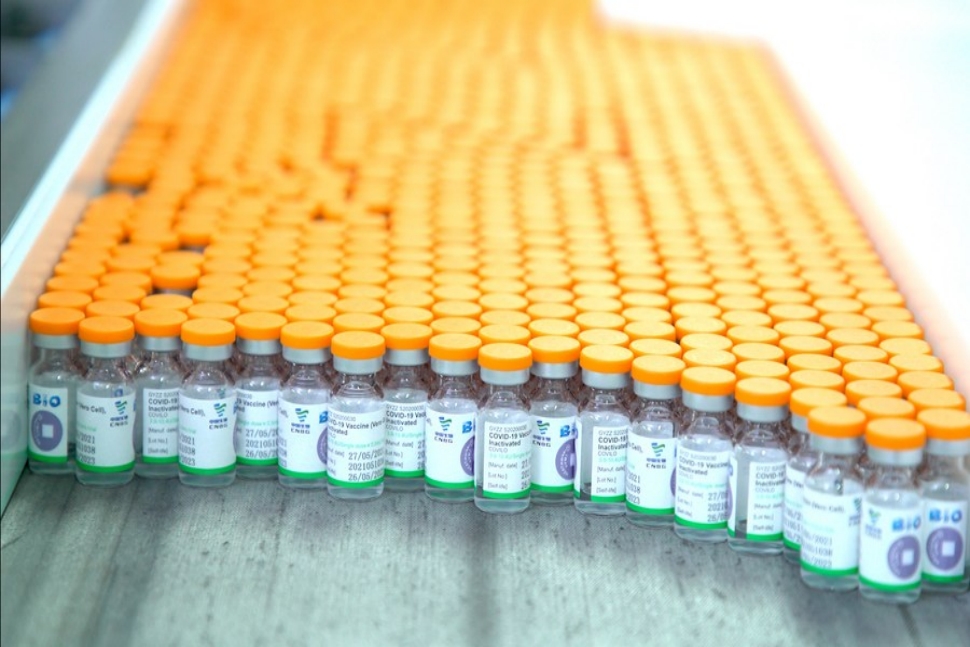trending topics
market reports
-

MEDICAL JAPAN 2025 OSAKA Returns to Showcase Global Innovations
2025-02-17
-

Visit MEDICAL JAPAN 2023 TOKYO and take full advantage of the business opportunities!
2023-09-01
-

US to distribute 400 million free N95 masks at CVS, Walgreens in COVID fight
2022-01-21
-

Ethiopia receives additional 2.2 mln doses of Chinese-donated COVID-19 vaccines
2022-01-21
-

Hong Kong researchers say they develop novel material able to kill COVID-19 virus
2022-01-14
-

10 million more Chinese doses on way for Kenya
2022-01-14
-

Sino-African ties on track for a brighter future
2022-01-07
-

Efforts urged to boost COVID-19 vaccine production capacity in poor countries
2022-01-07
-

UAE approves Sinopharm's new protein-based COVID-19 vaccine
2022-01-07
-

UAE approves Sinopharm's new protein-based COVID-19 vaccine
2022-01-07
Sensors: diagnosing middle-ear infection with ultrasound
2019-09-06
A new type of ultrasound transducer from Fraunhofer should soon be delivering a fast and reliable diagnosis of infection of the middle ear. A U.S. company and the Fraunhofer Institute for Photonic Microsystems IPMS are collaborating on the development and application of this technology. The transducer is integrated in an otoscope and helps physicians decide whether a course of antibiotics is really necessary.
In cases of infection of the middle ear, particularly among infants and young children, antibiotics are often the remedy of choice. Yet the equipment used to diagnose this condition has stood still for a number of decades. As a result, doctors can only deliver a diagnosis that is subjective and unreliable.

Thanks to sensor technology developed by Fraunhofer IPMS, a new device from OtoNexus Medical Technologies will radically enhance the diagnosis of middle ear infections.
On average, diagnostic accuracy for this condition is as low as 50 percent, not least when it comes to distinguishing between a bacterial and viral infection. This means that lots of children are prescribed antibiotics unnecessarily. This, in turn, is feeding a growing resistance to antibiotics worldwide. However, a new type of ultrasound transducer developed at the Fraunhofer Institute for Photonic Microsystems IPMS can resolve this dilemma. It employs air-coupled ultrasound to enable a precise diagnosis of infection of the middle ear, a condition also known as otitis media. The U.S. company OtoNexus Medical Technologies has developed an otoscope incorporating this technology. Their device is now undergoing clinical studies. Pediatricians and other doctors will be able to use it to examine the external auditory canal and, more particularly, the area behind the ear drum. In a matter of seconds, they will be able to tell whether there is air or fluid in the middle ear, and to characterize this fluid. This will permit them to distinguish between different stages of the illness and thereby determine the appropriate treatment.
"The classic otoscope is an optical system and hasn't changed in decades," explains Dr. Sandro Koch, a physicist at Fraunhofer IPMS in Dresden. "But when fitted with our ultrasound transducer, which is both a transmitter and receiver, it develops new functions." The transducer emits ultrasonic pulses and captures the echo reflected from the eardrum. On the basis of this data, the device generates a reading that tells the doctor about the degree of infection.
The innovative transducer is designed to operate via the medium of air. It features a capacitor formed by two electrodes separated by a small air-filled gap. "One of these electrodes is flexible," Koch explains. "We use the vibrations of this electrode to transmit ultrasonic pulses. When the echo from this signal strikes a flexible membrane, the resultant vibration is converted into a detectable electrical signal." Proprietary software developed by industry partner OtoNexus analyzes the echo signal. Initial clinical studies have corroborated the accuracy of the analysis. In other words, the reading provides physicians with a reliable indication for middle-ear infection.
The ultrasound transducer is a socalled CMUT (capacitive micromachined ultrasonic transducer). It is produced on a silicon wafer by means of special microelectromechanical systems (MEMS) technology developed at Fraunhofer IPMS. The transducer has a low power consumption and can be mass-produced cheaply. "And, unlike traditional ceramic piezoelectric ultrasound transducers, our MEMS transducer can be miniaturized," says Koch. "That's a major advantage here, because it means the CMUT can be incorporated much more easily in an otoscope."
The new otoscope featuring a Fraunhofer CMUT is currently at the prototype stage with market launch anticipated within a few years.
Uses of the MEMS transducer are not restricted to medical applications. For instance, ultrasound transducers can also be incorporated in smartphones and tablets to enable gesture control or installed in vehicles to control onboard infotainment systems. They can also deliver various functions in robotics, including distance measurement.
MEDICA-tradefair.com; Source: Fraunhofer-Gesellschaft
In cases of infection of the middle ear, particularly among infants and young children, antibiotics are often the remedy of choice. Yet the equipment used to diagnose this condition has stood still for a number of decades. As a result, doctors can only deliver a diagnosis that is subjective and unreliable.

Thanks to sensor technology developed by Fraunhofer IPMS, a new device from OtoNexus Medical Technologies will radically enhance the diagnosis of middle ear infections.
On average, diagnostic accuracy for this condition is as low as 50 percent, not least when it comes to distinguishing between a bacterial and viral infection. This means that lots of children are prescribed antibiotics unnecessarily. This, in turn, is feeding a growing resistance to antibiotics worldwide. However, a new type of ultrasound transducer developed at the Fraunhofer Institute for Photonic Microsystems IPMS can resolve this dilemma. It employs air-coupled ultrasound to enable a precise diagnosis of infection of the middle ear, a condition also known as otitis media. The U.S. company OtoNexus Medical Technologies has developed an otoscope incorporating this technology. Their device is now undergoing clinical studies. Pediatricians and other doctors will be able to use it to examine the external auditory canal and, more particularly, the area behind the ear drum. In a matter of seconds, they will be able to tell whether there is air or fluid in the middle ear, and to characterize this fluid. This will permit them to distinguish between different stages of the illness and thereby determine the appropriate treatment.
"The classic otoscope is an optical system and hasn't changed in decades," explains Dr. Sandro Koch, a physicist at Fraunhofer IPMS in Dresden. "But when fitted with our ultrasound transducer, which is both a transmitter and receiver, it develops new functions." The transducer emits ultrasonic pulses and captures the echo reflected from the eardrum. On the basis of this data, the device generates a reading that tells the doctor about the degree of infection.
The innovative transducer is designed to operate via the medium of air. It features a capacitor formed by two electrodes separated by a small air-filled gap. "One of these electrodes is flexible," Koch explains. "We use the vibrations of this electrode to transmit ultrasonic pulses. When the echo from this signal strikes a flexible membrane, the resultant vibration is converted into a detectable electrical signal." Proprietary software developed by industry partner OtoNexus analyzes the echo signal. Initial clinical studies have corroborated the accuracy of the analysis. In other words, the reading provides physicians with a reliable indication for middle-ear infection.
The ultrasound transducer is a socalled CMUT (capacitive micromachined ultrasonic transducer). It is produced on a silicon wafer by means of special microelectromechanical systems (MEMS) technology developed at Fraunhofer IPMS. The transducer has a low power consumption and can be mass-produced cheaply. "And, unlike traditional ceramic piezoelectric ultrasound transducers, our MEMS transducer can be miniaturized," says Koch. "That's a major advantage here, because it means the CMUT can be incorporated much more easily in an otoscope."
The new otoscope featuring a Fraunhofer CMUT is currently at the prototype stage with market launch anticipated within a few years.
Uses of the MEMS transducer are not restricted to medical applications. For instance, ultrasound transducers can also be incorporated in smartphones and tablets to enable gesture control or installed in vehicles to control onboard infotainment systems. They can also deliver various functions in robotics, including distance measurement.
MEDICA-tradefair.com; Source: Fraunhofer-Gesellschaft



 My Member
My Member Message Center
Message Center











